Just over two weeks before Christmas 1967, The Rolling Stones issued Their Satanic Majesties Request. The album’s title appeared to serve time on the peace-and-love, flowers-for-everyone good vibes of the psychedelic era. A year later, the Stones’ next LP, Beggars Banquet, went further. It opened with "Sympathy for the Devil." “Just call me Lucifer…or I'll lay your soul to waste,” sang Mick Jagger.
The Stones were already troubled. There was the Redlands drug raid in February 1967 and the subsequent upholding of the appeal against the prison sentences handed down to Jagger and Keith Richards. Brian Jones was also targeted and, in October 1967, sentenced to jail: also quashed, due to his mental state.
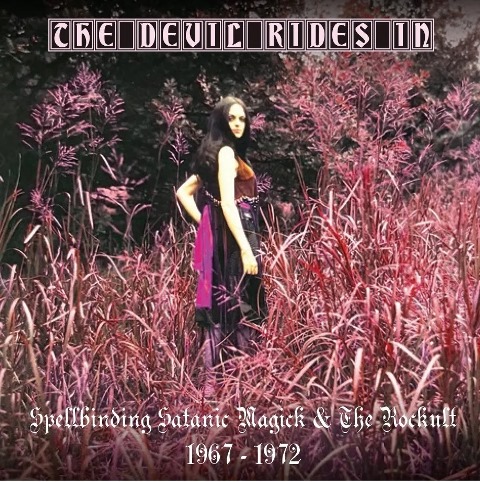 However, what came after the release of Beggars Banquet was even unhappier. The Rolling Stones would meet darkness face on rather than singing about it. Jones quit the group in June 1969 and died early the next month. Less than a week later, Jagger’s girlfriend Marianne Faithfull attempted to take her own life. Then, in December 1969 – the Stones played Altamont, the ill-conceived, poorly managed free outdoor California concert where an audience member was stabbed to death by bikers who were meant to be providing security.
However, what came after the release of Beggars Banquet was even unhappier. The Rolling Stones would meet darkness face on rather than singing about it. Jones quit the group in June 1969 and died early the next month. Less than a week later, Jagger’s girlfriend Marianne Faithfull attempted to take her own life. Then, in December 1969 – the Stones played Altamont, the ill-conceived, poorly managed free outdoor California concert where an audience member was stabbed to death by bikers who were meant to be providing security.
The case is often made that Altamont was the full stop closing the Sixties: the good times were over. But, equally, there is the case that Satanic Majesty’s and “Sympathy for the Devil” laid the ground for what was soon to come: that by referring to the devil, the Stones already knew that only bad would come from the good times. There was a basis to think this. The blues, the Stones’ inspiration, had been dubbed “the devil’s music” since at least the 1930s. Robert Johnson, who recorded “Hellhound on my Tail” and “Me and the Devil Blues” in 1937, supposedly made a pact with the devil. Jagger and Co were well aware of this (they recorded Johnson’s “Love in Vain” for their 1969 Let It Bleed album), and of Johnson’s early death. Perhaps the Stones’ artistic perspective was unsurprising.
Between the release of Satanic Majesties and Beggars Banquet, less mighty bands were also looking to the dark side. Crazy World of Arthur Brown’s “Fire,” hit number one in Summer 1968. Its lyrics begin “I am the god of hell fire and I bring you fire.” Their first single, issued in September 1967, had been titled “Devil’s Grip.” The Gun’s 'Race With the Devil” went Top Ten in the last couple of months of 1968. Most strikingly, a non-hit single issued in August 1969 had a tempestuous B-side which seemed to sum up where things had gone. Jason Crest’s overwrought “Black Mass” escaped attention at the time but attracted notice in the 1980s.
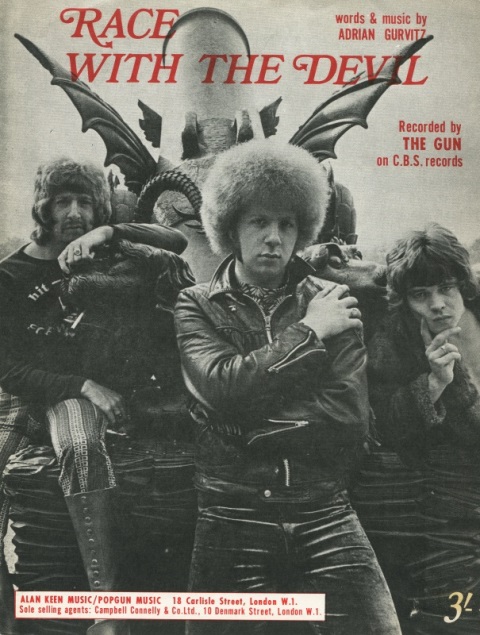 From around the end of 1967 – before which, The Beatles included an image of Aleister Crowley on the sleeve of May 1967’s Sgt. Pepper's Lonely Hearts Club Band – a bunch of British pop and rock bands, the Stones prime amongst them, began cleaving to the notion that, as the essay in the three-CD set The Devil Rides In - Spellbinding Satanic Magick & The Rockult 1967-1974 puts it “lyrical subject matter needed darkening, the riffs made more ponderous and the chants more shocking. Where darker to go than into the woods? Woods where semi-clad witches danced around open fires, gentlemen donned goat heads and crucifixes were crucifixed upside down.” The by-and-large tongue-in-cheek clamshell box is billed as “exploring rock’s dark underbelly and explorations in the occult, witchcraft, bad majick and satanism.” “Rockult” is the word coined to describe this tendency. (pictured left, The Gun get as close as they can to the devil)
From around the end of 1967 – before which, The Beatles included an image of Aleister Crowley on the sleeve of May 1967’s Sgt. Pepper's Lonely Hearts Club Band – a bunch of British pop and rock bands, the Stones prime amongst them, began cleaving to the notion that, as the essay in the three-CD set The Devil Rides In - Spellbinding Satanic Magick & The Rockult 1967-1974 puts it “lyrical subject matter needed darkening, the riffs made more ponderous and the chants more shocking. Where darker to go than into the woods? Woods where semi-clad witches danced around open fires, gentlemen donned goat heads and crucifixes were crucifixed upside down.” The by-and-large tongue-in-cheek clamshell box is billed as “exploring rock’s dark underbelly and explorations in the occult, witchcraft, bad majick and satanism.” “Rockult” is the word coined to describe this tendency. (pictured left, The Gun get as close as they can to the devil)
The booklet’s essay notes that "like all good movements in popular culture, the music was not alone, it fed off a plethora of films and books that all seemed to fly out of 1968 and well into the early Seventies. Magazines joined in of course.” The Dracula comic is mentioned, as are the Man, Myth And Magic magazine, books published by New English Library, the Pan Book Of Horror Stories series and Dennis Wheatley’s novels.
Bands like Black Sabbath (absent: presumably to do with licencing restrictions), Black Widow, Coven and Lucifer's Friend duly emerged (the latter three are collected). Songs with dark themes were recorded: the Arthur Brown-related Atomic Rooster’s “Death Walks Behind You,” Genesis’ “One-Eyed Hound,” Sam Gopal’s “The Dark Lord,” Warhorse’s “Ritual,” Writing On The Wall’s “Lucifer Corpus,” Zior’s “Entrance of the Devil” (all heard on The Devil Rides In). The version of “Sympathy for the Devil” compiled is by Sandie Shaw, as the Stones are also unlicensable.
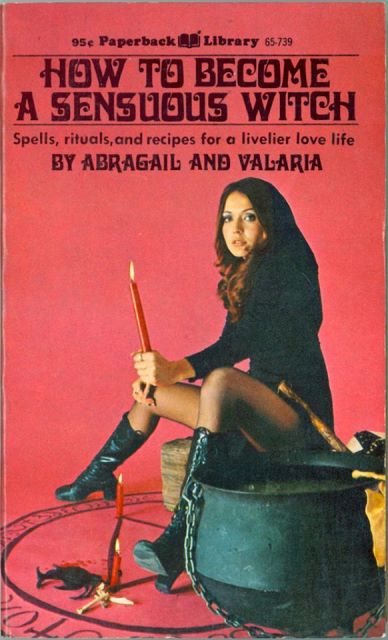 There are also tracks which, while atmospherically or lyrically right for the collection’s theme, are mostly one-off digressions by pop or rock bands stretching out to try something on for size rather than wholeheartedly embracing a burgeoning trend: The Creation’s “Nightmares,” Dave Dee, Dozy, Beaky, Mick & Titch's ever-amazing "The Sun Goes Down," The Easybeats’ “Heaven and Hell,” The Flying Machine’s “The Devil Has Possession of Your Mind,” The In-Be-Tweens’ (who became Slade) "Girl Child, I am an Evil Witchman," The Move’s “Night of Fear,” The Open Mind’s “Magic Potion.” The lyrical cliché of the irresistible temptress as spell-casting witch is never far. (pictured right, the 1971 book How To Become A Sensuous Witch)
There are also tracks which, while atmospherically or lyrically right for the collection’s theme, are mostly one-off digressions by pop or rock bands stretching out to try something on for size rather than wholeheartedly embracing a burgeoning trend: The Creation’s “Nightmares,” Dave Dee, Dozy, Beaky, Mick & Titch's ever-amazing "The Sun Goes Down," The Easybeats’ “Heaven and Hell,” The Flying Machine’s “The Devil Has Possession of Your Mind,” The In-Be-Tweens’ (who became Slade) "Girl Child, I am an Evil Witchman," The Move’s “Night of Fear,” The Open Mind’s “Magic Potion.” The lyrical cliché of the irresistible temptress as spell-casting witch is never far. (pictured right, the 1971 book How To Become A Sensuous Witch)
While it is irrefutable that something which was the flipside to the Sixties dream had emerged, it is a little disappointing that, beyond the literature and film aspect, the booklet's text does not dig into – no matter how briefly – the wider socio-cultural (and pharmacological: The Creation’s “Nightmares” was inspired by a bad LSD trip) circumstances which fostered the most persuasive examples of this music. The choice of 1974 as the cut-off year is not explained. But ending then does have the benefit of not needing to get into the various forms of metal which subsequently drew from a yen for the Satanic.
Also, then, it is unnecessary to get into the ludicrous backmasking furore of the early Eighties where specific records were targeted – including those of Led Zeppelin and ELO – as their grooves apparently included messages which, if played in reverse, revealed the band’s apparently Satanic intent. Then, there’s the ritual abuse panic which, for example, Psychic TV were groundlessly sucked into. Some individuals were looking for a dark side to pop and rock and found it, even if it was not there. It was, though, already explicitly – often preposterously so – present, as amply demonstrated by The Devil Rides In - Spellbinding Satanic Magick & The Rockult 1967-1974.
- Next week: 40th-anniversary edition of Arvo Pärt's Tabula Rasa
- More reissue reviews on theartsdesk
- Kieron Tyler’s website







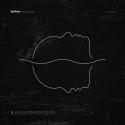

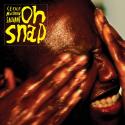



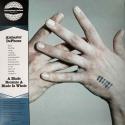
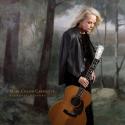
Add comment